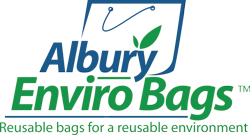 When we clean our home, often we look for products that will be most effective in doing their job. If we want to clean an oven, we want to make sure that the product is going to get all of the built up grease off. However, have you ever wondered about how these products can affect the environment? Have you considered what products are the worst to use? Environmentally damaging products aren’t limited to cleaning products, so here is the list of 6 environmentally dangerous household products, and some great alternatives so you can do your bit to keep our environment safe.
When we clean our home, often we look for products that will be most effective in doing their job. If we want to clean an oven, we want to make sure that the product is going to get all of the built up grease off. However, have you ever wondered about how these products can affect the environment? Have you considered what products are the worst to use? Environmentally damaging products aren’t limited to cleaning products, so here is the list of 6 environmentally dangerous household products, and some great alternatives so you can do your bit to keep our environment safe.
Plastic bottles
Purchasing bottled water can sometimes be convenient. However, it is quite damaging to the environment and your health. Single-use plastic bottles can seep chemicals into your water, especially when heat is added to the equation. Over 25 billion single-use plastic bottles are manufactured each year. More than a million barrels of oil is needed in order to produce these bottles, affecting our non-renewable resources. When you want a drink of water, go straight to the tap for your thirst fix. If you really need to bring a bottle with you, go for either a re-usable stainless steel or glass bottle instead.
Disposable plates and cups
 Using disposable utensils, plates and cups may make things easier in terms of cleaning and be an easy fix for a dinner party or picnic, but these one-use products are non-biodegradable, so they lead to pollution of our environment and overflowing of our landfill. Instead, use reusable plates and utensils.
Using disposable utensils, plates and cups may make things easier in terms of cleaning and be an easy fix for a dinner party or picnic, but these one-use products are non-biodegradable, so they lead to pollution of our environment and overflowing of our landfill. Instead, use reusable plates and utensils.
Household Cleaning Products
As previously mentioned, we often forget about the harmful effects that cleaning products can have on our environment and our health. Conventional soaps and detergents can contain sulphates and phosphates. Phosphates contaminate waterways and create a layer of algae, which in turn suffocates marine life due to the lack of oxygen in the water. There are many alternatives to these conventional cleaners that are safe, natural and friendly to the environment. Baking soda is known to have many uses and is very safe to use. For example, it can be used as a soap scum remover on shower screens, simply by mixing a paste of baking soda, natural dishwashing liquid and water. Not only is this a safer option, but it really works.
Pesticides
Many people are starting to grow their own vegetables at home, either to save costs on their grocery bills or to ensure what they are eating is safe. But we can never escape the bugs that want to nibble on our plants and vegetables and we often find ourselves looking for pesticides to keep them at bay. Pesticides used on commercial farms can be quite toxic and when rainwater runs through it into our waterways, it can kill our water life. Instead, natural pesticide made from household ingredients and essential oils can help clear out unwanted pests.
Batteries
 Batteries are a staple to many items around the home, including childrens toys and remote controls for televisions. Yet, batteries contain harmful ingredients such as lead, nickel and mercury. When batteries end up in landfill, their toxic contents enter our air and waterways. One of the best ways to reduce this pollutant is to reduce or stop using single-use batteries. Try to find toys for children that do not need batteries and avoid remote controls. If you really need to use batteries, opt for rechargeable batteries instead. Even though they are more expensive than single-use batteries, you will find that they will pay for themselves over time as well as reducing waste within our environment.
Batteries are a staple to many items around the home, including childrens toys and remote controls for televisions. Yet, batteries contain harmful ingredients such as lead, nickel and mercury. When batteries end up in landfill, their toxic contents enter our air and waterways. One of the best ways to reduce this pollutant is to reduce or stop using single-use batteries. Try to find toys for children that do not need batteries and avoid remote controls. If you really need to use batteries, opt for rechargeable batteries instead. Even though they are more expensive than single-use batteries, you will find that they will pay for themselves over time as well as reducing waste within our environment.
Plastic bags
Plastic bags may seem convenient but they never break down, and are made from various toxic chemicals which are bad for the environment. Instead, use canvas bags.
Hazardous household materials can certainly endanger our environment leaving long-term damaging effects. By reducing the use of these materials now, we can start to help our eco-systems as well as the health and wellbeing of our families.




